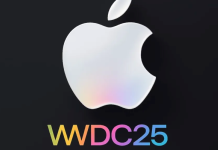Can anybody imagine their life without their mobile phones or other smart devices that they use to connect and interact with the digital world? The response is certainly a loud ‘NO!’ Mobile phones have almost completely overtaken laptops and PCs, despite the fact that some tasks must be done on a PC or laptop only. However, mobile phones and smart gadgets have developed rapidly in recent years.
Everyone was amazed by the devices when they were newly introduced, and I believe that people are still enthralled by new mobile phones and the advanced technology that comes with them. Technology has also progressed rapidly, but the epidemic that struck the world in March 2020 was the primary driver of greater usage and technological advancement.
People are aware of new smartphones and are eager to get them as they come to market. However, many people are unaware of what mobile technology is! Let us learn more about mobile technology and its capabilities.
Cellular communication depends on mobile technologies. It is made up of two-way communication devices, computing devices, and networking technologies to connect them all. Internet-enabled gadgets such as smartphones, tablets, and watches are the pinnacle of modern mobile technology. These are the most recent in a line of technologies that includes two-way pagers, laptop computers, mobile telephones, GPS navigation systems, and many more.
There are several kinds of mobile networks. Cellular networks, 4G networking, Wi-Fi, and Bluetooth are the many forms of mobile networks.
Cellular Networks: Radio networks that allow mobile devices to automatically switch frequencies and interact seamlessly and without interruption across broad geographic areas.
4G Networking: The current cellular service standard for wireless communication. It employs packet-switching technology, which divides data into pieces for transmission and reassembles it at the destination. 4G is said to be the fastest network for mobile phones, better than 2G and 3G, and 5G, which is faster than 4G, is still on the way. Work is being done in many sections of the country to bring the 5G network ready as soon as possible, and many prominent service providers are focusing on 5G technology.
Wi-Fi: Radio waves that link devices to the internet via hotspots, which are localized routers. Wi-Fi networks, which stand for wireless fidelity, are similar to cell towers for internet access, however, they do not automatically pass service without a Wi-Fi connection. Most mobile devices have the ability to automatically switch between Wi-Fi and cellular networks based on availability and user desire.
Bluetooth: It is a telecommunications industry standard for connecting devices over short distances utilizing radio waves with short wavelengths. Bluetooth allows users to connect or pair devices such as headsets, speakers, phones, and other devices instantly.
These are the many types of mobile networks. Let us now examine the potential of effective mobile technology.
Scalability: Developing point solutions that do not scale throughout an organization can be costly in terms of development, administration, and maintenance. Apps must be designed holistically, taking into account lines of business, procedures, and technological settings.
Cloud development: The cloud provides an effective platform for developing, testing, and managing applications. Application programming interfaces (APIs) allow developers to link apps to back-end data while focusing on front-end tasks. They may enhance security by adding authentication and getting access to artificial intelligence (AI) and cognitive services.
Mobility management: As mobile technology becomes more prevalent, businesses turn to enterprise mobility management (EMM) solutions to set up devices and apps, track device usage and inventories, govern and safeguard data, and support and solve difficulties.
Security: The size and complexity of the mobile security challenge are frightening. Artificial intelligence (AI) is developing as a critical tool for detecting security flaws in massive volumes of data. From a centralized dashboard, it can assist uncover and remediating malware events, as well as prescribing measures to fulfill regulatory obligations.
Edge computing: One of the primary benefits of 5G is that it may bring apps closer to their data sources or edge servers. Proximity to data at its origin can provide network benefits such as faster response times and increased bandwidth availability. Edge computing provides the possibility for businesses to undertake more thorough data analysis and acquire deeper insights faster.
Because of the many capabilities and technical improvements, it has become simpler to explore the globe at any time and from any location thanks to the mobile phones that are available in every family.









